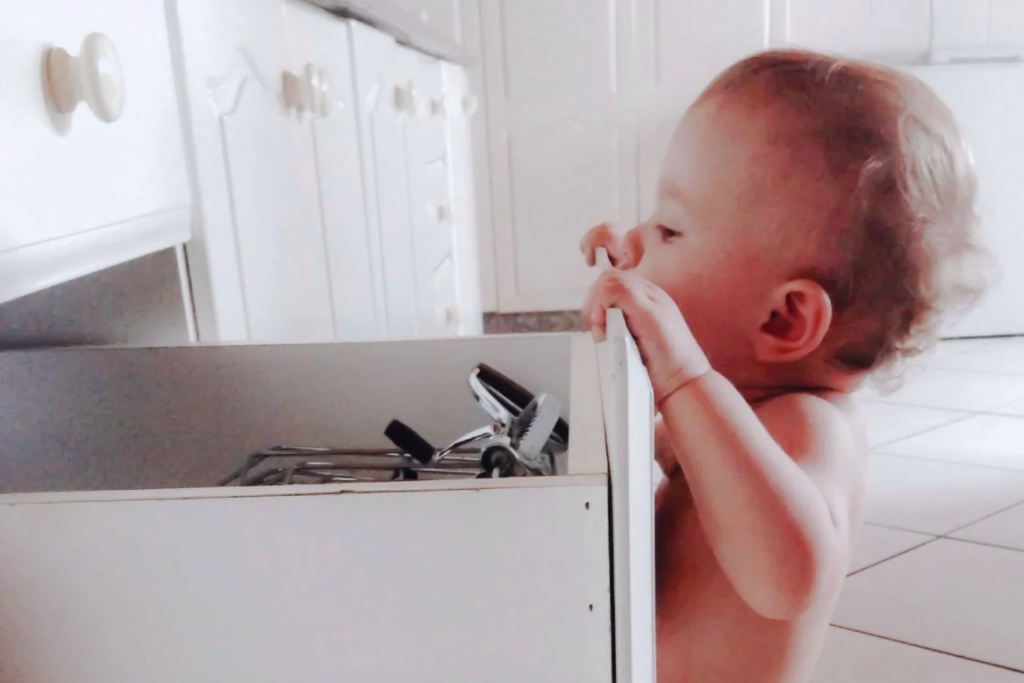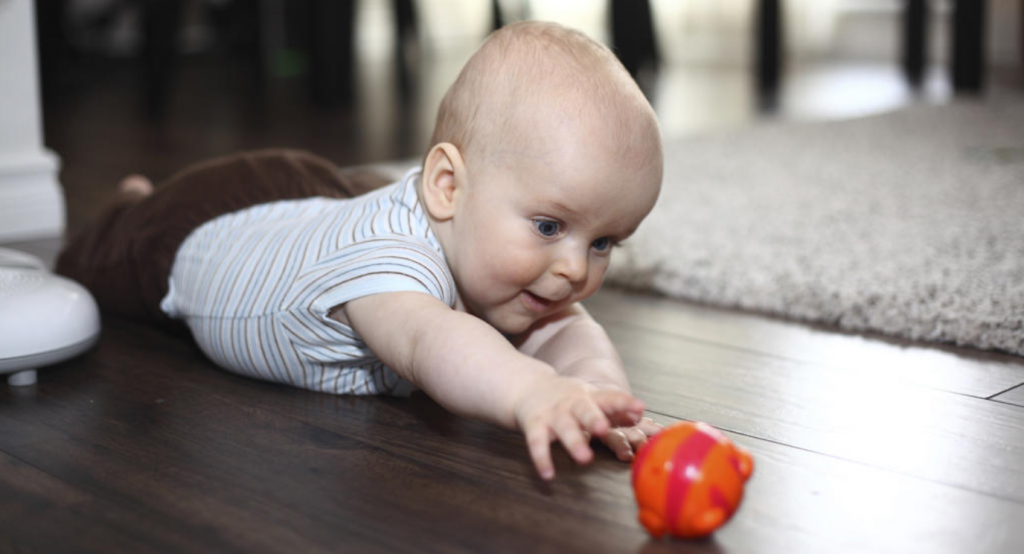As a parent, keeping your baby safe is always a top priority, especially during the crawling stage. Crawling is an exciting time for babies as they explore their surroundings, but it also presents new dangers and hazards. To ensure your baby’s safety during this phase, taking some necessary precautions and steps is important. In this guide, we’ll share 10 tips on how to keep your crawling baby safe, so you can enjoy this milestone with peace of mind.
Block off hazardous areas
Creating a safe zone for your crawling baby is essential to ensure their safety. It is crucial to block off not baby-proofed areas to prevent them from accessing any dangerous areas. Using gates, fences, or playpens can restrict their access to areas with stairs, sharp corners, or any other potential hazards.
It is essential to ensure that all barriers used are secure and cannot be easily pushed over or moved by the baby. It is also essential to ensure that the playpen or any other enclosure is large enough for the baby to move around and play comfortably.
Eliminate choking hazards
Babies are known to explore their surroundings by putting things in their mouths, and it’s not uncommon for crawling babies to pick up small objects that can be a choking hazard. As a parent, it’s essential to keep such items out of their reach. It’s advisable to go around your home and remove any small items that could be a choking hazard, including small toys, coins, and marbles.
Also, be mindful of the foods your baby eats. Foods like nuts or popcorn can be a choking hazard, so it’s best to avoid them altogether or ensure they are cut into small pieces. By eliminating choking hazards, you can help ensure your crawling baby is safe and can explore their surroundings without the risk of harm.
Secure furniture
Babies who are learning to crawl and pull themselves up on furniture are at risk of getting injured if the furniture is not properly secured to the wall. According to the Consumer Product Safety Commission, tip-over incidents are a significant risk for young children. Hundreds of children are injured or killed yearly due to furniture tipping over on them.
To prevent such incidents, ensure all heavy furniture items, such as bookcases, dressers, and TVs, are anchored to the wall with brackets or straps. Check the furniture’s stability regularly and make sure they are secure. Additionally, avoid placing any heavy items, such as vases or picture frames, on top of the furniture, as babies might try to grab them, causing the furniture to tip over.
Cover electrical outlets
Electrical outlets can be extremely dangerous for crawling babies who are constantly exploring their surroundings. They may try to stick their fingers, toys, or other objects into the outlets, which can result in severe electrical shock. To avoid such situations, covering all the electrical outlets within your baby’s reach is important.
You can use outlet covers or safety plugs to protect your baby from getting electrocuted. These safety devices are easy to install and come in various sizes and shapes to fit different types of outlets. Some covers have sliding or swiveling mechanisms that allow you to use the outlets when needed while still keeping them safe from curious little hands. Be sure to cover all the outlets, including the ones in rooms that your baby may not have access to yet.
Keep sharp objects out of reach
Babies are naturally curious and will grab and explore anything within their reach. Therefore, keeping sharp objects out of their reach is important to prevent injuries. Knives, scissors, and other sharp-edged items should be stored in a locked cabinet or where they are not easily accessible.
Be sure to keep the area around the cooking area clean and tidy, and put away any sharp objects after using them. Also, teach older children to be responsible around these items and put them away properly to ensure your crawling baby’s safety.
Use door stoppers
When it comes to ensuring the safety of crawling babies, it’s important to consider all the potential hazards in your home. One often overlooked hazard is the risk of fingers getting caught in closing doors. This can happen when a crawling baby follows someone through a doorway or when a gust of wind causes a door to slam shut unexpectedly.
To prevent this from happening, it’s important to use door stoppers throughout your home. Door stoppers can be easily installed at the base of doors and prevent them from closing completely, providing a safe gap for little fingers to pass through. Taking this simple precaution can reduce the risk of injury to your crawling baby and provide greater peace of mind for you and your family.
Use non-slip mats
When babies are learning to crawl, their sense of balance and coordination is still developing. This makes them more prone to falls and accidents, especially on hard, slippery floors. One way to prevent falls is by using non-slip mats in areas where your baby crawls.
These mats provide a textured surface that helps your baby gain traction and prevent slipping. You can use non-slip mats in the living room, kitchen, and any other area where your baby is likely to crawl. Just make sure that the mats are securely placed and do not pose a tripping hazard for you or your baby.
Keep small objects out of reach
Babies have a tendency to put everything in their mouths, which can be dangerous if the item is small enough to swallow. Keep small objects out of reach of crawling babies to prevent choking hazards. Be mindful of objects that may be lying around the house, such as coins, buttons, batteries, or any other small items that can fit into their mouths.
Make sure to clean the floor regularly to remove any small objects that may have fallen onto the ground. If you have older children, make sure they understand the importance of keeping small items away from their younger siblings.
Supervise your baby
It is crucial to supervise your crawling baby at all times to ensure their safety. Babies can move quickly and easily get into dangerous situations in a matter of seconds, so it is essential to keep a close eye on them. Avoid leaving your baby alone, even for a short period, and always be within arm’s reach when they are exploring.
When you need to attend to something else, such as cooking or using the bathroom, bring your baby with you or ask a trusted adult to keep an eye on them. Remember, it only takes a few seconds for an accident to occur, so never leave your baby unattended.
Teach your baby boundaries
Designating a safe space for your baby to crawl and play is an effective way to ensure their safety. A playpen or baby gate can be used to create an enclosed area where your baby can crawl and explore without the risk of getting into anything dangerous. This also allows you to keep a closer eye on them while they play and provides a sense of security for both you and your baby.
Ensure the playpen is sturdy, without any sharp edges or loose parts that could harm your baby. Additionally, it’s important to make sure that the playpen is free from any small objects or choking hazards that could be within reach. By teaching your baby to crawl within this designated area, you are setting clear boundaries for them and helping them understand where it’s safe to play.










